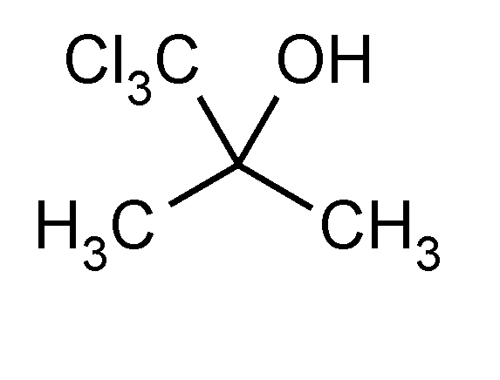Formula C4H7Cl3O Boiling point 167 °C | Molar mass 175.5 g/mol Appearance White solid | |
 | ||
Chlorobutanol, or trichloro-2-methyl-2-propanol, is a chemical preservative, sedative hypnotic and weak local anaesthetic similar in nature to chloral hydrate. It has antibacterial and antifungal properties. Chlorobutanol is typically used at a concentration of 0.5% where it lends long term stability to multi-ingredient formulations. However, it retains antimicrobial activity at 0.05% in water. In pure state it is a white, volatile solid with a menthol-like odor.
Contents
Chemical synthesis
Chlorobutanol is formed by the simple nucleophilic addition of chloroform and acetone. The reaction is base driven by potassium or sodium hydroxide.
Toxicity
Chlorobutanol is highly toxic to the liver, is a skin irritant and a severe eye irritant.
Parthenogenesis
Chlorobutanol has proven effective at stimulating parthenogenesis in sea urchin eggs up to the pluteus stage, possibly by increasing irritability to cause stimulation. For the eggs of the fish Oryzias latipes, however, chlorobutanol only acted as an anaesthetic.
